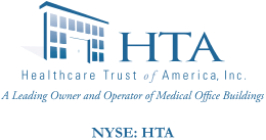PROSPECTUS

HEALTHCARE TRUST OF AMERICA, INC.
Class A Common Stock, Preferred Stock, Debt Securities, Warrants, Rights and Units
Guarantees of Debt Securities of Healthcare Trust of America Holdings, LP by
Healthcare Trust of America, Inc.
Guarantees of 3.500% Senior Notes due
2026, 3.750% Senior Notes due 2027, 3.100% Senior Notes due 2030 and
2.000% Senior Notes due 2031 of Healthcare Trust of
America Holdings, LP by Healthcare Trust of America, Inc.
HEALTHCARE TRUST OF AMERICA HOLDINGS, LP
Debt Securities
3.500% Senior Notes due 2026,
3.750% Senior Notes due 2027, 3.100% Senior Notes due 2030 and
2.000% Senior Notes due 2031
Healthcare Trust of America, Inc. may offer and sell, from time to time, in one or more offerings, Class A common stock, preferred stock, debt securities, warrants, rights, and units consisting of two or more of these classes or series of securities.
Healthcare Trust of America Holdings, LP may offer and sell, from time to time, in one or more offerings, debt securities, 3.500% Senior Notes due 2026, 3.750% Senior Notes due 2027, 3.100% Senior Notes due 2030 and 2.000% Senior Notes due 2031. These debt securities, 3.500% Senior Notes due 2026, 3.750% Senior Notes due 2027, 3.100% Senior Notes due 2030 and 2.000% Senior Notes due 2031 may be offered and sold separately, together or as units with other securities described in this prospectus. The debt securities, 3.500% Senior Notes due 2026, 3.750% Senior Notes due 2027, 3.100% Senior Notes due 2030 and 2.000% Senior Notes due 2031 of Healthcare Trust of America Holdings, LP may be fully and unconditionally guaranteed by Healthcare Trust of America, Inc., as described in this prospectus or a prospectus supplement.
The securities described in this prospectus may be sold in one or more offerings in amounts, at prices and on terms to be determined at the time of each offering thereof. Each time we offer securities using this prospectus, we will provide specific terms of the securities and the offering in one or more supplements to this prospectus. The prospectus supplements may also add to, update or change the information in this prospectus and will also describe the specific manner in which we will offer the securities. The securities may be offered and sold by us to or through one or more underwriters, broker-dealers or agents, or directly to purchasers on a continuous or delayed basis. See “Plan of Distribution.”
This prospectus may not be used by us to sell securities unless accompanied by a prospectus supplement. You should carefully read this prospectus and any accompanying prospectus supplement, including the information incorporated by reference, prior to investing in any of our securities.
Healthcare Trust of America, Inc.’s Class A common stock (the “Class A common stock”) is listed on the New York Stock Exchange (the “NYSE”) under the symbol “HTA.” On February 25, 2021, the last reported sale price of the Class A common stock on the NYSE was $27.36 per share. We do not expect any of the other securities offered hereby to be listed on any securities exchange or over-the-counter market unless otherwise described in the applicable prospectus supplement.
Investing in our securities involves a high degree of risk. See the “Risk Factors” section on page 6 of this prospectus.
NEITHER THE SECURITIES AND EXCHANGE COMMISSION NOR ANY STATE SECURITIES COMMISSION HAS APPROVED OR DISAPPROVED OF THESE SECURITIES OR DETERMINED IF THIS PROSPECTUS IS TRUTHFUL OR COMPLETE. ANY REPRESENTATION TO THE CONTRARY IS A CRIMINAL OFFENSE.
The date of this prospectus is February 26, 2021
